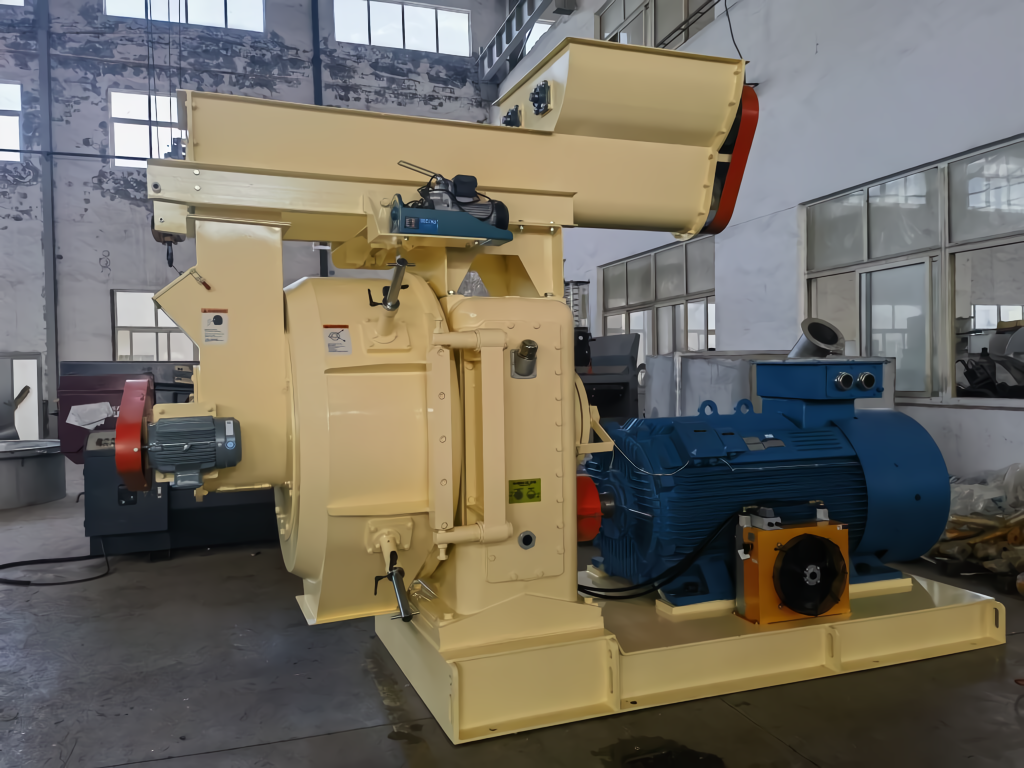Welcome to Rongda Machinery Co., Ltd
Toggle Navigation
Let's dive into what makes the RD-915MX biomass pellet machine stand out in today's market. I've reworked this to flow like a casual overview you'd share with someone interested in industrial gear—think of it as chatting about its cool features, how it's built tough, where it shines in real-world use, and the support that backs it up. I've kept all the key tech terms intact but shuffled the structure around for better readability, mixing in some storytelling to make it feel less like a manual and more like practical advice.
At the heart of the RD-915MX is its Thermal Synergy Control System, which keeps everything running smoothly. Picture this: it uses a dual-cycle oil-cooled gearbox that stays under 45°C, paired with Siemens PLC temperature control modules to juggle spindle loads on the fly. Tests from the Jiangsu Institute of Quality Inspection back this up, showing bearings that last 8,000 hours— that's about 42% longer than your average machine.
What really sets it apart is how it handles different raw materials without skipping a beat. The Multimodal Raw Material Adaptation feature relies on a hydraulic pressure sensor in the spiral gradient feeder, adjustable from 0-60MPa, to prevent clogs. It works great with stuff like straw (at 15%-25% moisture), sawdust (0.5-3mm particles), or even sludge (with ash content up to 30%). I remember hearing about those 2024 trials in Malaysia with palm kernels—it ran non-stop for over 240 hours, proving it's no slouch in mixed setups.
Then there's the Modular Mold Assembly, using DIN-standard flange connections for quick swaps—under 30 minutes for dies from Ø6-12mm. It teams up with proprietary pellet density detectors (accurate to ±0.05g/cm³) that tweak compression ratios (1:4 to 1:8) based on lignin content, following GB/T 35820-2018 standards. This keeps the output's calorific value steady between 4,200-4,800kcal/kg, so you get consistent quality every time.
On the manufacturing side, they've beefed up the critical parts to handle tough conditions. The main gears are made from 42CrMo4 alloy steel, vacuum carburized to HRC60-62 hardness, while the gearbox sports FAG-TIMKEN hybrid bearings. These showed 65% better corrosion resistance in Thailand's humid tropics, with ISO 6336 fatigue certification exceeding 10⁷ cycles. It's built to last in real environments.
Safety-wise, the Intelligent Safety Protocols are a game-changer. You've got multistage protections like metal detection (sensitive to Φ≥2mm) with electromagnetic sorting, moisture laser sensing (5%-35% range) that kicks in drying adjustments, and overload protection that reacts in under 0.3 seconds. Data from 2024 operations in Ho Chi Minh City showed this cut unplanned downtime by 91%—huge for keeping things productive.
This machine is pushing boundaries in energy shifts and sustainable practices. It can handle up to 132 tons a day (at 5.5T/H over 24 hours), enough to fuel a 2MW biomass power plant. Field tests in Indonesia highlighted a 78% drop in PM2.5 emissions compared to coal, hitting EU 2015/1189 standards. That's a big win for cleaner energy.
It also plays into the circular economy nicely, turning waste into useful stuff. Beyond basic pellets, it creates carbon fiber precursors with 134MPa tensile strength (thanks to a collab with Wuhan University of Technology), mushroom substrates with 35%-50% porosity, or soil amendments that boost cation exchange capacity by 2.3x. According to 2024 Ministry of Agriculture stats, it hits an 82% utilization rate, making the most of resources.
And don't overlook its versatility with raw materials—it's not just for sawdust or its powder, which make great heating pellets for homes or factories. It handles agricultural scraps like straw too, turning them into burnable fuel or even animal feed. Overall, the RD-915MX adapts seamlessly to whatever biomass you're throwing at it.

Globally, they've set up a solid three-tier maintenance network. There are regional spare parts hubs with six warehouses in Southeast Asia for quick access. Remote diagnostics use 5G+AR tech for troubleshooting with 98.7% accuracy, and they offer TÜV-accredited training programs for operators. It's all about minimizing headaches.
To give you a sense of its edge, here's a side-by-side with industry averages:
| Metric | RD-915MX | Industry Average |
|---|---|---|
| Energy per ton (kW·h/t) | 68-72 | 85-95 |
| Die replacement time | <30 mins | 45-60 mins |
| Moisture tolerance | 12%-35% | 15%-25% |
| Continuous operation | 240 hours MTBF | 120-150 hours |
In short, the RD-915MX isn't just another pellet machine—it's a reliable workhorse that blends cutting-edge tech with practical smarts, perfect for scaling up biomass operations without the usual hassles. If you're eyeing efficiency and adaptability, this one's worth a closer look.